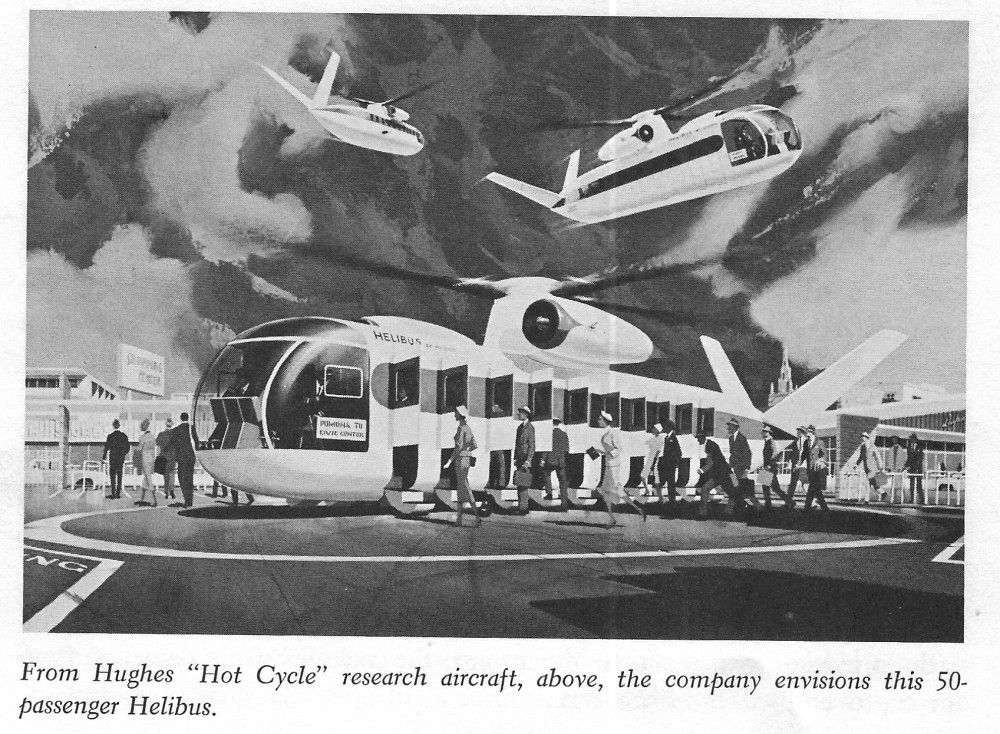From the very early 1960’s, this piece of Hughes artwork depicts a hot-cycle “Helibus.” The “hot-cycle” was a briefly studied form of helicopter that did not mechanically drive the rotor, but instead ducted hot exhaust gas from a turbojet up into the rotor hub and then down through ducts in the rotors, exhausting out nozzles near the tips of the rotors. The exhaust gas would then push the rotor blades directly. The advantage was that since there was no direct mechanical linkage between the rotors and the fuselage, the torque that a helicopter normally needs to counter with a tail rotor would be largely eliminated. Thus this “Helibus” has no tail rotor, but it would still need to have some sort of reaction control thrusters at the tail to provide directional control at low speed.
Note that every row of passenger seats has its own door. This would greatly facilitate passenger loading and unloading, at some considerable weight and cost penalty. it would also firmly lock in seat pitch… as the engines are swapped out for newer, better, lighter, more powerful and less fuel hungry versions, the airlines drive would be, as we’ve seen, to pack more and more passengers onboard. But here the doors on the side have to precisely match the seat rows.
A vehicle like this would probably be used mostly to transport office drones from rooftop heliports in urban city centers to transport hubs out in the burbs or the sticks.
